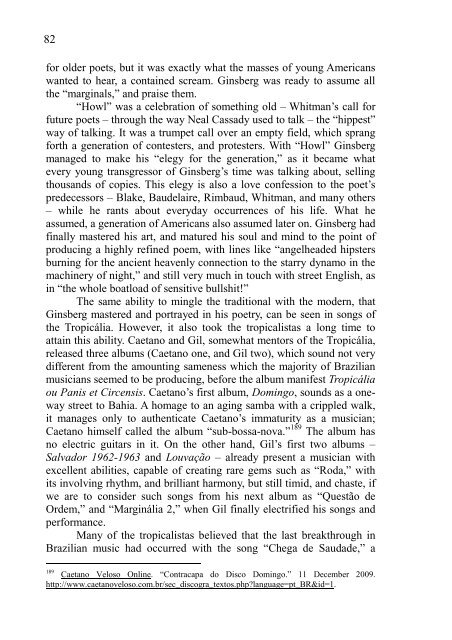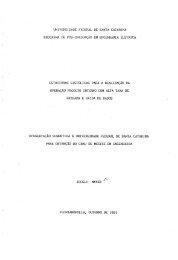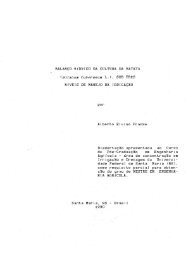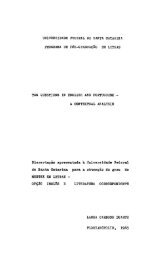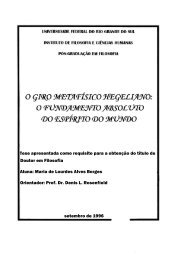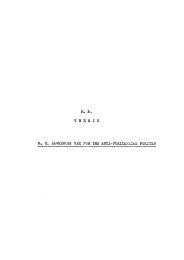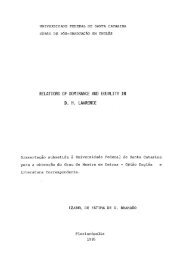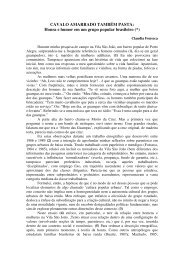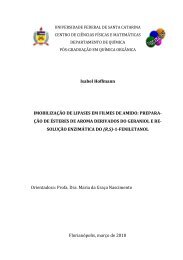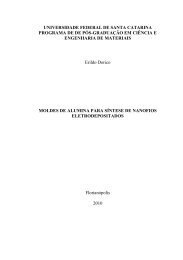Tropical ginsberg
Tropical ginsberg
Tropical ginsberg
Create successful ePaper yourself
Turn your PDF publications into a flip-book with our unique Google optimized e-Paper software.
82<br />
for older poets, but it was exactly what the masses of young Americans<br />
wanted to hear, a contained scream. Ginsberg was ready to assume all<br />
the “marginals,” and praise them.<br />
“Howl” was a celebration of something old – Whitman’s call for<br />
future poets – through the way Neal Cassady used to talk – the “hippest”<br />
way of talking. It was a trumpet call over an empty field, which sprang<br />
forth a generation of contesters, and protesters. With “Howl” Ginsberg<br />
managed to make his “elegy for the generation,” as it became what<br />
every young transgressor of Ginsberg’s time was talking about, selling<br />
thousands of copies. This elegy is also a love confession to the poet’s<br />
predecessors – Blake, Baudelaire, Rimbaud, Whitman, and many others<br />
– while he rants about everyday occurrences of his life. What he<br />
assumed, a generation of Americans also assumed later on. Ginsberg had<br />
finally mastered his art, and matured his soul and mind to the point of<br />
producing a highly refined poem, with lines like “angelheaded hipsters<br />
burning for the ancient heavenly connection to the starry dynamo in the<br />
machinery of night,” and still very much in touch with street English, as<br />
in “the whole boatload of sensitive bullshit!”<br />
The same ability to mingle the traditional with the modern, that<br />
Ginsberg mastered and portrayed in his poetry, can be seen in songs of<br />
the Tropicália. However, it also took the tropicalistas a long time to<br />
attain this ability. Caetano and Gil, somewhat mentors of the Tropicália,<br />
released three albums (Caetano one, and Gil two), which sound not very<br />
different from the amounting sameness which the majority of Brazilian<br />
musicians seemed to be producing, before the album manifest Tropicália<br />
ou Panis et Circensis. Caetano’s first album, Domingo, sounds as a oneway<br />
street to Bahia. A homage to an aging samba with a crippled walk,<br />
it manages only to authenticate Caetano’s immaturity as a musician;<br />
Caetano himself called the album “sub-bossa-nova.” 189 The album has<br />
no electric guitars in it. On the other hand, Gil’s first two albums –<br />
Salvador 1962-1963 and Louvação – already present a musician with<br />
excellent abilities, capable of creating rare gems such as “Roda,” with<br />
its involving rhythm, and brilliant harmony, but still timid, and chaste, if<br />
we are to consider such songs from his next album as “Questão de<br />
Ordem,” and “Marginália 2,” when Gil finally electrified his songs and<br />
performance.<br />
Many of the tropicalistas believed that the last breakthrough in<br />
Brazilian music had occurred with the song “Chega de Saudade,” a<br />
189 Caetano Veloso Online. “Contracapa do Disco Domingo.” 11 December 2009.<br />
http://www.caetanoveloso.com.br/sec_discogra_textos.php?language=pt_BR&id=1.


